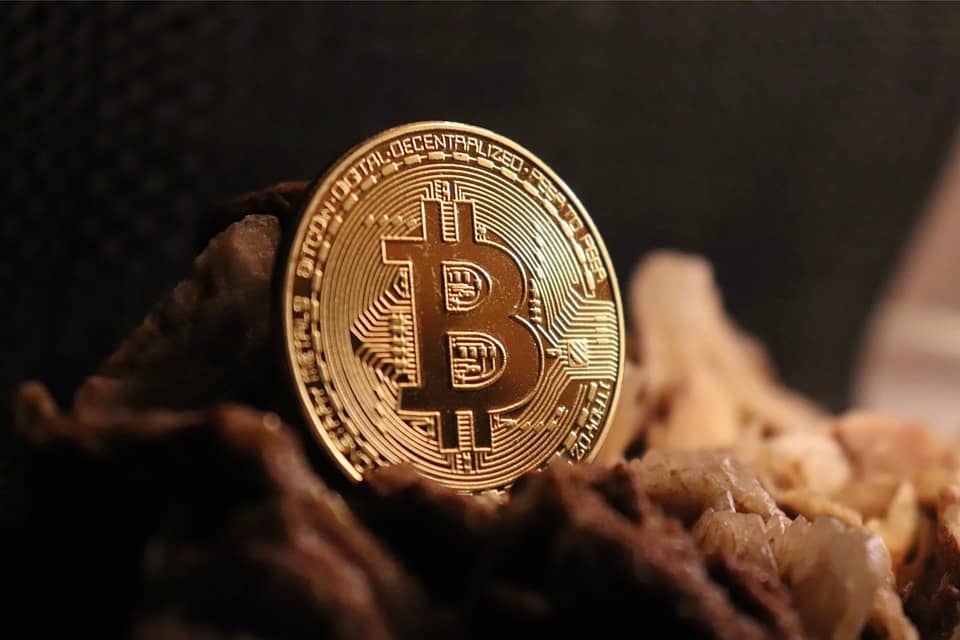Chain Reaction: How the Evolution of Altcoins is Forcing Innovation and Improvement in the Bitcoin Ecosystem
The world of cryptocurrency is constantly evolving, with new players and technologies emerging every day. At the center of this evolution is the original and most well-known digital currency, Bitcoin. Since its inception in 2009, Bitcoin has been the benchmark for all other cryptocurrencies, often referred to as "altcoins." However, the rise of altcoins has led to a chain reaction of innovation and improvement in the Bitcoin ecosystem, which this article will explore in-depth.
The Rise of Altcoins
The term "altcoin" refers to any cryptocurrency that is not Bitcoin. With the success of Bitcoin, many other cryptocurrencies emerged, each with its unique features, advantages, and disadvantages. The first altcoin, Namecoin, was created in 2011, but it was not until the introduction of Litecoin (LTC) and Peercoin (PPC) in 2011 and 2012, respectively, that the concept of altcoins gained mainstream attention.
The rapid growth of altcoins can be attributed to several factors, including:
- Increased competition: With the popularity of Bitcoin, many developers and entrepreneurs saw an opportunity to create alternative versions of the original cryptocurrency, often with improvements or unique features.
- Diversification: As the value of Bitcoin fluctuated, investors began to look for alternative assets, which led to the creation of new cryptocurrencies with different use cases, such as PoS (Proof of Stake) and DAG (Directed Acyclic Graph) protocols.
- Experimentation and innovation: The rise of altcoins provided a platform for developers to experiment with new technologies, such as smart contracts, decentralized applications (dApps), and decentralized finance (DeFi).
The Chain Reaction: How Altcoins are Improving the Bitcoin Ecosystem
The rapid growth of altcoins has had a significant impact on the Bitcoin ecosystem, forcing innovation and improvement in several areas:
- Security: The threat of 51% attacks and other potential vulnerabilities has led to the development of more robust security measures, such as Segregated Witness (SegWit) and Lightning Network, in both Bitcoin and other altcoins.
- Scalability: As the increasing number of users and transactions overwhelmed the Bitcoin network, altcoins like Ethereum and Tezos implemented solutions such as sharding and proof-of-stake algorithms to improve scalability.
- Interoperability: The need for seamless communication between different blockchain networks has led to the development of cross-chain bridges and oracle services, enabling the integration of altcoins with the Bitcoin ecosystem.
- Dispute Resolution: The rise of decentralized finance (DeFi) platforms has created a need for dispute resolution mechanisms, such as smart contracts and decentralized arbitration, to ensure fairness and transparency in transactions.
- Education and Adoption: The proliferation of altcoins has led to a greater awareness of the benefits and potential risks associated with cryptocurrencies, resulting in increased adoption and a more educated user base.
The Future of the Bitcoin Ecosystem: Harmony and Coexistence
As the cryptocurrency market continues to evolve, it is essential to recognize the value that altcoins can bring to the Bitcoin ecosystem. Rather than seeing them as competitors, we should view them as complementary components, working together to create a more robust and robust digital currency landscape.
In the future, we can expect to see:
- Interoperability: The development of seamless communication protocols, enabling the integration of different blockchain networks and altcoins.
- Scalability: Further advancements in scaling solutions, such as sharding, proof-of-stake, and other innovative technologies, to accommodate the growing demand for digital assets.
- Education and Adoption: Ongoing efforts to educate the general public about the potential benefits and risks associated with cryptocurrencies, leading to increased adoption and a more informed user base.
- Innovation: Continued experimentation and innovation in areas such as DeFi, smart contracts, and decentralized applications (dApps).
Conclusion
The evolution of altcoins has created a chain reaction of innovation and improvement in the Bitcoin ecosystem. As the digital currency landscape continues to evolve, it is crucial to recognize the value of altcoins in pushing the boundaries of technology and spurring progress in the field. By embracing the diversity of digital assets and working towards interoperability, scalability, and education, we can create a brighter future for the cryptocurrency industry as a whole.
Frequently Asked Questions (FAQs)
Q: What is the difference between Bitcoin and an altcoin?
A: Bitcoin is the original and most well-known cryptocurrency, while altcoins are alternative digital currencies with their own unique features and use cases.
Q: Are altcoins less secure than Bitcoin?
A: While some altcoins may have security concerns, many have implemented robust security measures to prevent attacks and ensure the safety of transactions.
Q: Are all altcoins blockchain-based?
A: No, not all altcoins are blockchain-based. Some, like eCash, use alternative consensus algorithms or rely on centralized authorities for validation.
Q: Can I use my Bitcoin wallet to store altcoins?
A: Generally, no. While some wallets may support multiple cryptocurrencies, each altcoin typically requires its own dedicated wallet to ensure security and proper functioning.
Q: Is the rise of altcoins a threat to Bitcoin’s dominance?
A: No, the rise of altcoins has actually forced innovation and improvement in the Bitcoin ecosystem, leading to a more robust and secure digital currency landscape.
Q: Can I use altcoins to buy goods and services?
A: Many merchants and businesses accept multiple cryptocurrencies, including altcoins, for payment. However, this depends on the specific merchant and their payment processing methods.
By understanding the differences between Bitcoin and altcoins, we can better appreciate the unique qualities of each and how they can work together to shape the future of the digital currency landscape.

Leave a Reply